MXA RACE TEST: 2019 YAMAHA YZ250 TWO-STROKE
Q: FIRST AND FOREMOST, IS THE 2019 YAMAHA YZ250 BETTER THAN THE 2018 YZ250?
A: No. There should be no surprise about the lack of serious mods. Over the 13-year run of this particular YZ250 iteration, there have been very few actual model updates. 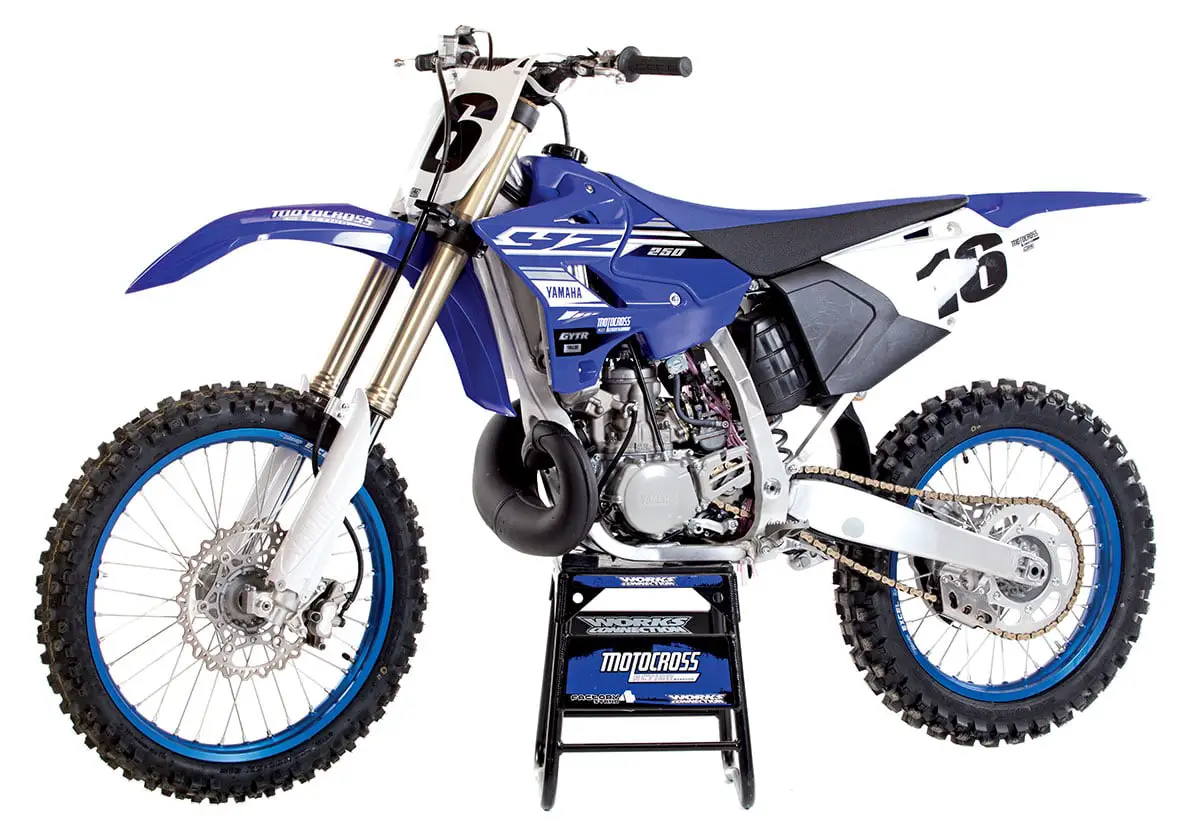
Q: WHAT CHANGES HAVE BEEN MADE TO THE YAMAHA YZ250 OVER THE LAST 13 YEARS?
A: Modern folklore would lead one to believe that after Yamaha designed the 2006 YZ250, they threw away the keys to the factory. Not true. The YZ250 has been updated at regular intervals since 2006—perhaps at a glacial rate, but updated nonetheless. Modern YZ250 history is carbon-dated from the 2006 model because that is when Kayaba SSS suspension was added to the package to bring the YZ250 to the forefront of the two-stroke universe; however, there were models before 2006 that played a big role in where the YZ250 is today. In 2005, Yamaha introduced its clean and simple plug-and-play aluminum frame, and in 2003 the current engine was developed. Here is the chronology of the YZ250’s development.
2005. The old steel frame was dropped in 2005 for a creative plug-and-play aluminum design that was 4 pounds lighter than the 2004 steel frame. In fact, the 2005 YZ250 was 7-1/2 pounds lighter than the 2004 YZ250. Additionally, the 2005 YZ250 got Honda-style front brake hose routing and Renthal 7/8-inch aluminum handlebars.
2006. Yamaha kicked out the jams in 2006 with new SSS suspension, a new rear brake caliper, on-the-fly clutch adjuster, 2mm-wider triple-clamp spacing, and a Ti shock spring. The most significant of the 2006 changes was the addition of Kayaba SSS suspension.
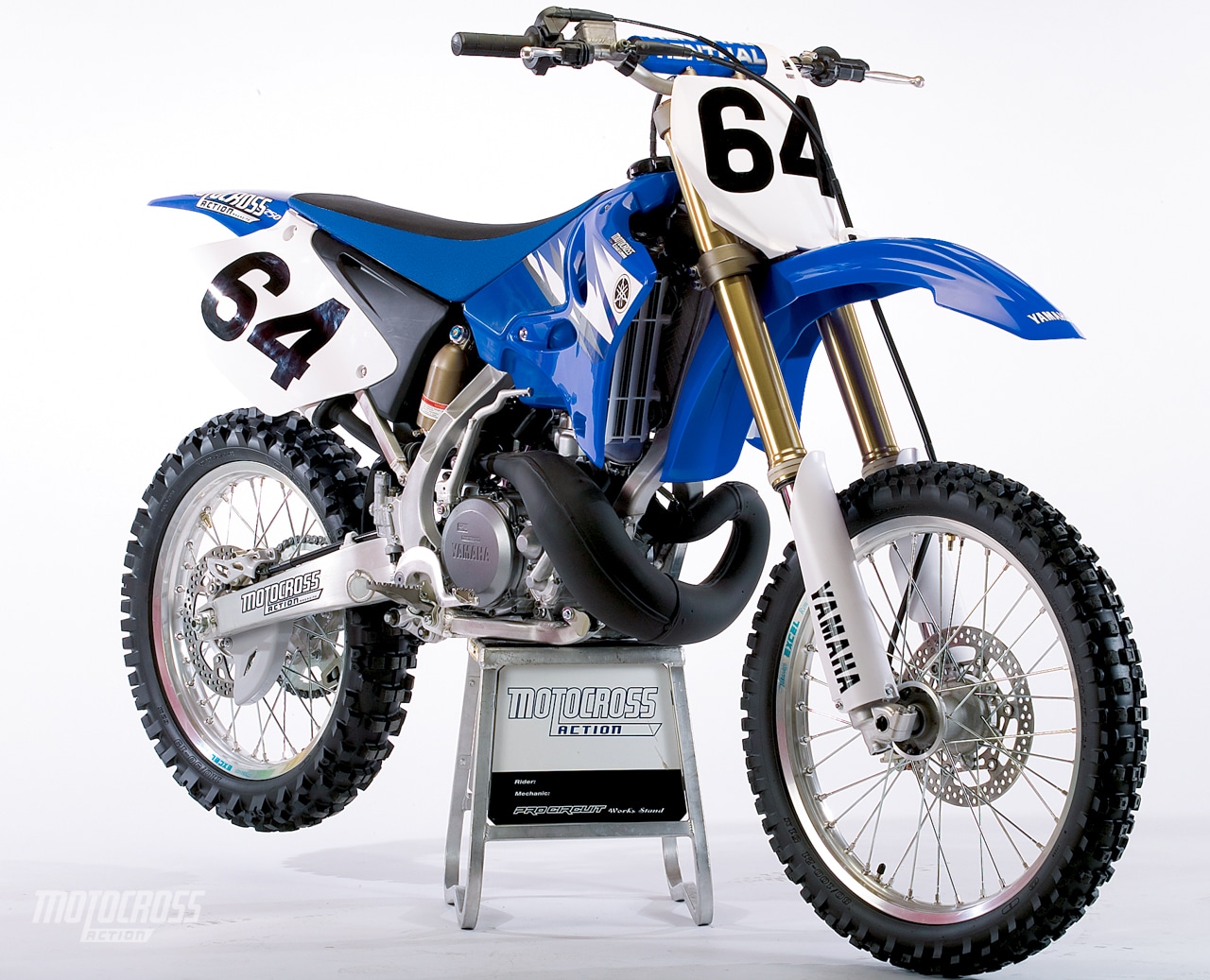
This is a 2006 Yamaha YZ250. Looks familiar doesn’t it?
2007. The big change for 2007 was the swap to the N3EW needle that most hardcore racers had been using in 2006. The N3EW needle delivered a big improvement in bottom-end and mid-range response from the 38mm Keihin PWK carburetor. In 2007, the 7/8-inch Renthals from 2005 were swapped out for 1-1/8-inch Renthal FatBars.
2008. Not a big year for mods, the 2008 YZ250 got a downsized front brake caliper, wave-style rotors, and triple clamps with removable bar mounts.
2009. In 2009, Yamaha finally drop-kicked its massive steel front brake hose clamp for a smaller and lighter aluminum clamp.
2010. BNG.
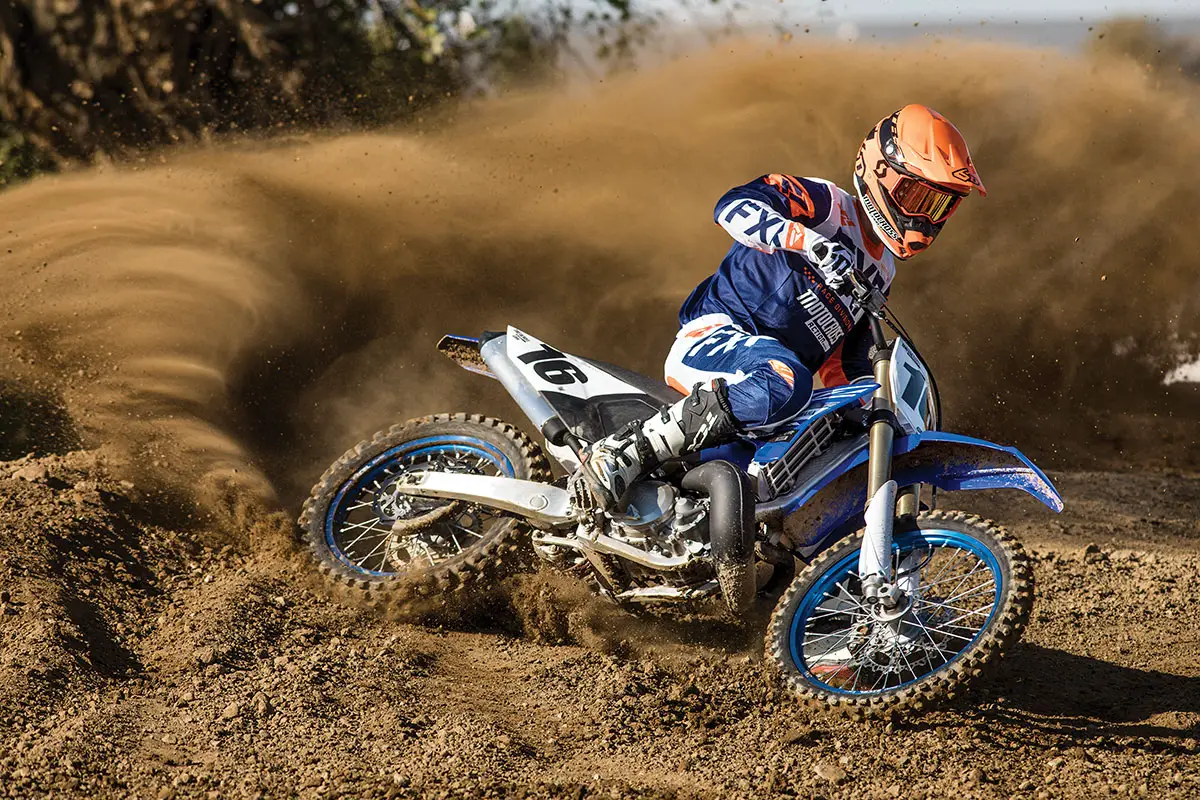
2011. The 2011 YZ250 got the 75mm-longer Euro-spec silencer. The compression ratio was reduced from 10.9:1 to 10.6:1 by increasing the volume of the combustion chamber by 0.5cc (this enabled the YZ250 to run a wider range of fuels available in both the USA and Europe). Finally, Yamaha added a neutral ignition switch to retard the mapping when the bike was in neutral (to help beat sound tests).
2012. BNG.
2013. The blue rear fender was switched to white plastic.
2014. The white rear fender was returned to blue.
2015. Yamaha updated the styling of all the plastics, save for the front number plate and gas tank, to the “arrow” look of the YZ-F four-strokes.
2016. Yamaha changed from silver rims to black.
2017. Yamaha upsized the front brake rotor from 250mm to 270mm.
2018. Yamaha changed from black rims to blue.
2019. BNG.
Q: WHAT SHOULD YAMAHA CHANGE ON THE YZ250 OVER THE NEXT 13 YEARS?
A: We would like to see Yamaha’s engineers make some real changes to the YZ250—not just to make the bike better, but as a good-faith effort to prove that they still care about what they produce for this very specialized group of dedicated Yamaha owners.
(1) Power. There is easy power to be found in the YZ250 engine. Every YZ250 owner knows that a Pro Circuit or FMF pipe, Boyesen or Moto Tassinari reed cage and Mitch Payton touch-up on the ports can add beaucoup power to the blue warhorse. It’s not that the YZ250 isn’t good enough; it’s just that it could be so much better. For example, MXA recently tested a Husqvarna FE300i two-stroke enduro bike that pumped out 49.77 horsepower. There is no way on God’s green earth that an enduro bike should be making close to 50 horses while Yamaha’s best two-stroke motocross bike is closer to 46 horses.
(2) Rear suspension. How old is the rear end of the 2019 YZ250? The simple fact that it still uses the small, 22mm rear axle and has the rear shock linkage pivot bolt routed through the swingarm should be a dead giveaway. Yamaha could easily put the 2019 YZ450F’s under-slung shock linkage, YZ450F hub, 25mm rear axle, wheel spacers and brake caliper carrier on the 2020 YZ250 (although they would need to use the 2009 swingarm to get the YZ450F linkage and YZ250 top shock mounts to line up). The latest-generation YZ450F swingarm is 4 percent less rigid vertically and 5 percent less rigid in twist. Conversely, it is 8 percent more rigid horizontally. The YZ450F swingarm is 12.2 ounces lighter than the YZ250 two-stroke swingarm. The YZ450F rear hub is 9 ounces lighter than the YZ250 hub. The total weight savings in unsprung weight is 1 pound, 6 ounces.
(3) Inertia. Many YZ250 racers add 9-ounce flywheel weights to their engines to spread out the power, increase traction and add a little extra over-rev. Yamaha could easily change the flywheel inertia at the crank to achieve the same thing or just mount a heavier stock flywheel.
(4) Gearing. Yamaha should just go ahead and put the 51-tooth sprocket on that every in-the-know YZ250 racer uses. This isn’t out of the question, because in 2019 Yamaha upped the YZ450F gearing by one tooth to stay in sync with what YZ450F racers were doing. After 13 years, they could listen to the YZ250 guys also.
(5) Fork/shock. We think that Yamaha should put the latest forks and shock that come on the 2019 YZ250F and YZ450F on the YZ250. If they can make the 2019 four-stroke better with updated components, imagine what those components could do for the YZ250..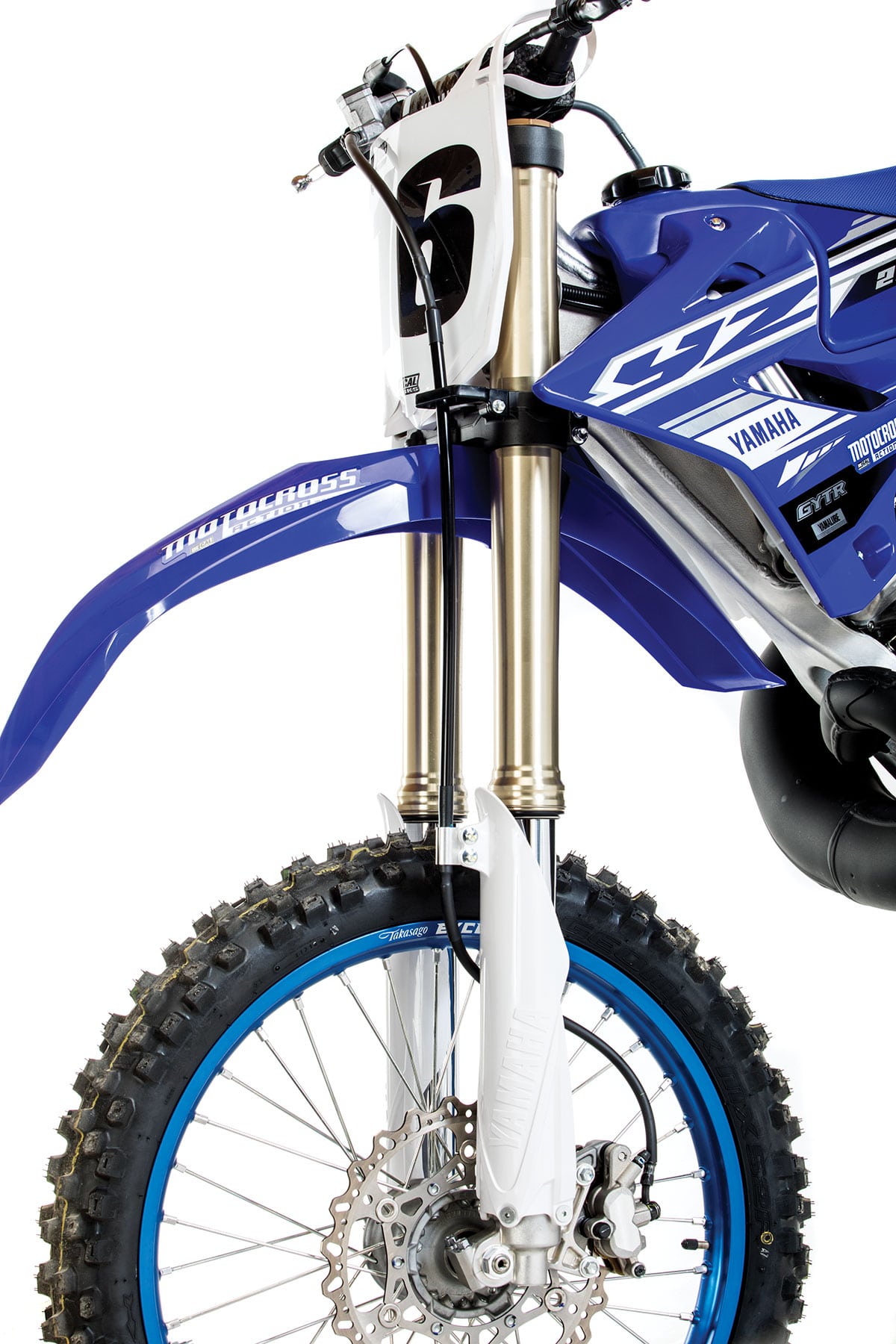 The 13-year-old Kayaba SSS forks are the best in the biz.
The 13-year-old Kayaba SSS forks are the best in the biz.
Q: WHAT’S SO HOT ABOUT THE KAYABA SSS SUSPENSION?
A: Every bike test says the same thing about Kayaba’s SSS suspension: “The Kayaba SSS components were 13 years ahead of the competition when they were introduced back in 2006. Kayaba SSS has worn the mantel of the best showroom stock suspension for all this time. The SSS forks have superb bottoming resistance and very well-thought-out damping. They are among the best forks on the showroom floor today. The new breed of rehashed coil-spring forks on the 2019 Suzuki RM-Z450, Honda CRF450 and Kawasaki KX250F are not much of a threat to SSS dominance.”
What has made SSS so good for so long? Yamaha’s goal with the SSS forks back in 2006 was to have firmer damping at the beginning of the stroke so that the forks wouldn’t react like a runaway train at the end of the stroke. The 2006 Yamaha engineers wanted the YZ250 fork to ride higher in its stroke over small bumps so that it could re-cock to its full travel to be better prepared for big hits. How did they achieve this? Before SSS forks, the typical motocross fork’s damping was 70-percent position sensitive. That means that the damping was dictated by the position of the fork’s piston inside the cartridge rod. In simple terms, the farther the piston moved down in the cartridge rod, the stiffer the damping.
In what was an Edison light-bulb moment, Kayaba made the 2006 SSS forks 90-percent speed sensitive. Speed-sensitive damping gets its name because the damping rate is determined not by the position of the fork’s piston in the cartridge rod but by the speed at which the piston moves though the cartridge rod. By switching from 30-percent speed-sensitive damping to 90 percent, Yamaha found the Holy Grail of suspension perfection. All the following Yamaha forks (2006 to 2019) have benefited from SSS’s linear damping. There are no hills or valleys in the SSS damping curve. It gets stiffer at the exact same rate in the first half of the travel as in the second half. Over the years, Yamaha has made damping and spring changes to keep up with the changing times, but the engineers have been careful not to mess with success.
Q: HOW FAST IS THE 2019 YAMAHA YZ250?
A: Stick with us on this. Yamaha and KTM are locked in a battle of old versus new. The 2019 KTM 250SX is much more powerful than the Yamaha YZ250, but that doesn’t necessarily mean it is faster. On the dyno, the KTM makes 47.20 horsepower, while the Yamaha YZ250 pumps out 46.08. But, it should be noted that the YZ250 hits its peak at a high 8800 rpm, while the 250SX hits its apex at a lower 8200 rpm. Knowing that horsepower is within one horse at peak really means very little on the track. These two powerbands have very little in common.
In motion, the KTM 250SX is significantly stronger from low to mid, as much as 4 horsepower stronger than the YZ250 at 7000 rpm. It hits hard, pulls hard and gives up early. Four horses is a lot of ponies to give up, but once the KTM 250SX peaks at 8200 rpm, it signs off quickly—and by the time the orange bike gets to the Yamaha’s 8800-rpm peak, the YZ250 is actually 4.7 horsepower better. The KTM 250SX excels at low to mid, and the Yamaha YZ250 excels on top. It is an interesting match-up—sheer grunt versus over-rev. In our opinion, the Yamaha YZ250’s engine is broader, more manageable and easier to ride than the more potent KTM 250SX’s.
Q: HOW DOES THE 2019 YAMAHA YZ250 HANDLE?
A: The pat answer is that if you liked last year’s YZ250 handling, you will like this year’s. Let’s not get too misty about the YZ250’s handling traits, because its best trait is that it doesn’t do anything wrong. It doesn’t trade straight-line stability for turning prowess. It doesn’t trade turning prowess for straight-line stability. It doesn’t seek quickness at the expense of accuracy. It doesn’t favor rigidity over suppleness. In short, it is predictable, stable and workman-like. Those may not sound like ecstatic adjectives, but that is because there is nothing to be ecstatic about. The 2019 Yamaha YZ250 is not the best-handling chassis on the showroom floor, but it has just enough of everything to win motorcycle races.
Q: WHAT DOES THE 2019 YAMAHA YZ250 WEIGH?
A: The 2019 YZ250 weighs 219 pounds. That is a lot lighter than a 238-pound Yamaha YZ450F, but it is heavy for a 250 two-stroke. How do we know? Because the KTM 250SX two-stroke weighs 212 pounds.
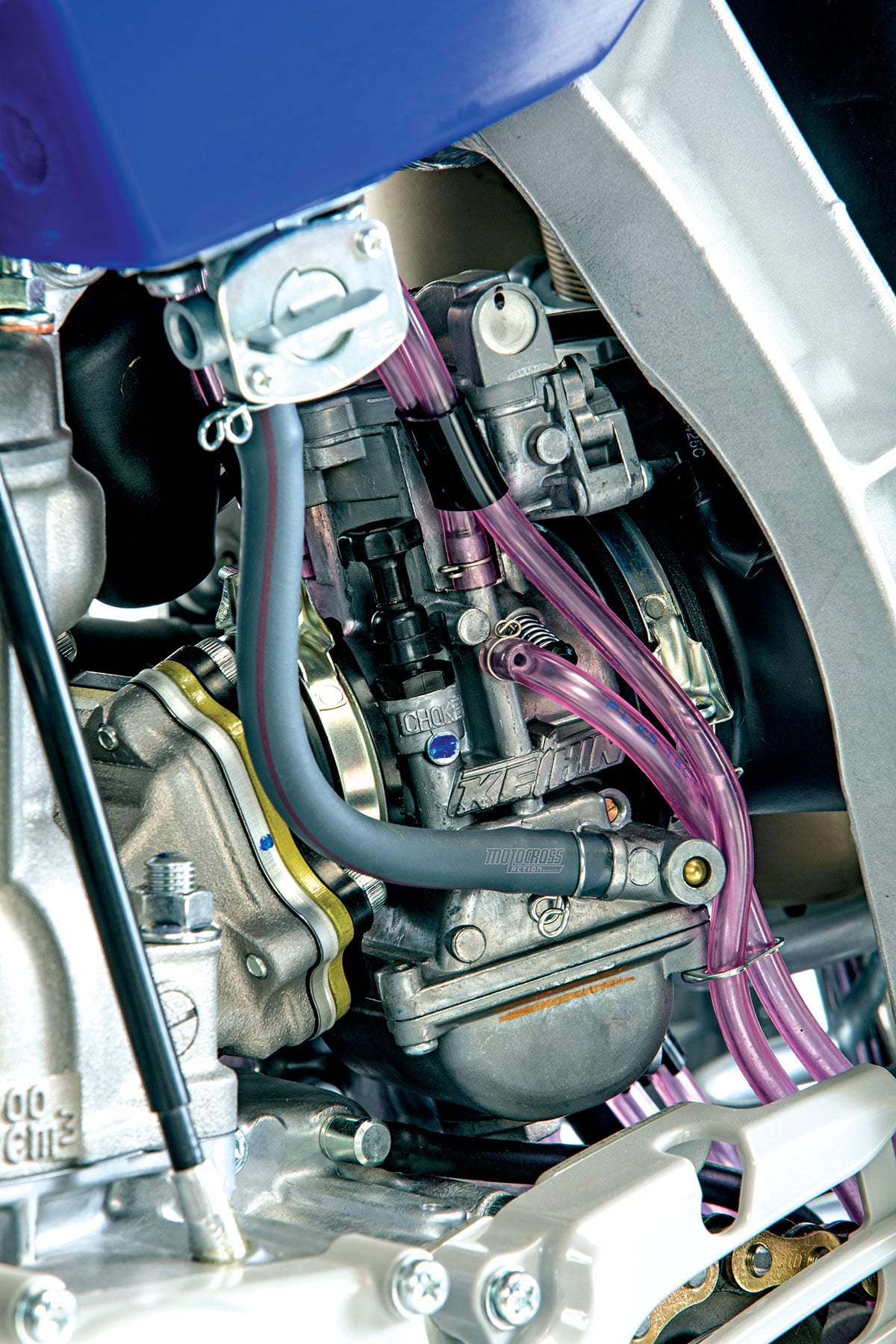
Q: WHAT DOES THE 2019 YAMAHA YZ250 TWO-STROKE COST?
A: In 2006, the ground-breaking Yamaha YZ250 retailed for $6199, and the 2006 Yamaha YZ450F had an MSRP of $6899. That was a $700 price difference. In 2019, the Yamaha YZ250 retails for $7399, while the 2019 YZ450F has an MSRP of $9299 for a $1900 price difference. The increase in the price gap between a YZ250 and YZ450F from 2006 to 2019 represents the cost of technology—the 2006 YZ450F and 2019 YZ450F are totally different machines—not so with the YZ250.
Perhaps more telling is that back in 2006, the KTM 250SX only cost $100 more than the 2006 Yamaha YZ250. Thirteen years later, the 2019 KTM 250SX retails for $8199, which is an $800 difference. The $800 buys a 2019 KTM 250SX race bike with a lighter weight, stronger brakes, hydraulic clutch, changeable maps, better handling, adjustable power valve, no-tools airbox, counter balancer and modern DNA.
Q: IS THE 2019 YAMAHA YZ250 WORTH THE MONEY?
A: In case you haven’t noticed, motocross bikes are expendable, throw-away, obsolescence-prone machines that have very short life spans. Even the greatest bikes of all time, bikes as omnipotent as the 2008 Honda CRF450, are forgotten in short order. Motocross bikes are, by design, meant to be displaced and replaced by the next big thing.
Not the YZ250 two-stroke. Because of how good it was 13 years ago and how entrenched it has been in Yamaha’s yearly new-bike lineup, it has transcended time. There are more Yamaha YZ250s still being ridden than any other motocross bike. Name any motocross machine made in 2006 that is still around in any significant numbers today. The two bikes that come to mind instantly are the YZ250 and YZ125. We would gladly put our money down on a Yamaha YZ250, because we know that when it comes time to resell it, there will be a line of suitors ready to pay top dollar for it. It is the Wonder Bread of motocross bikes.
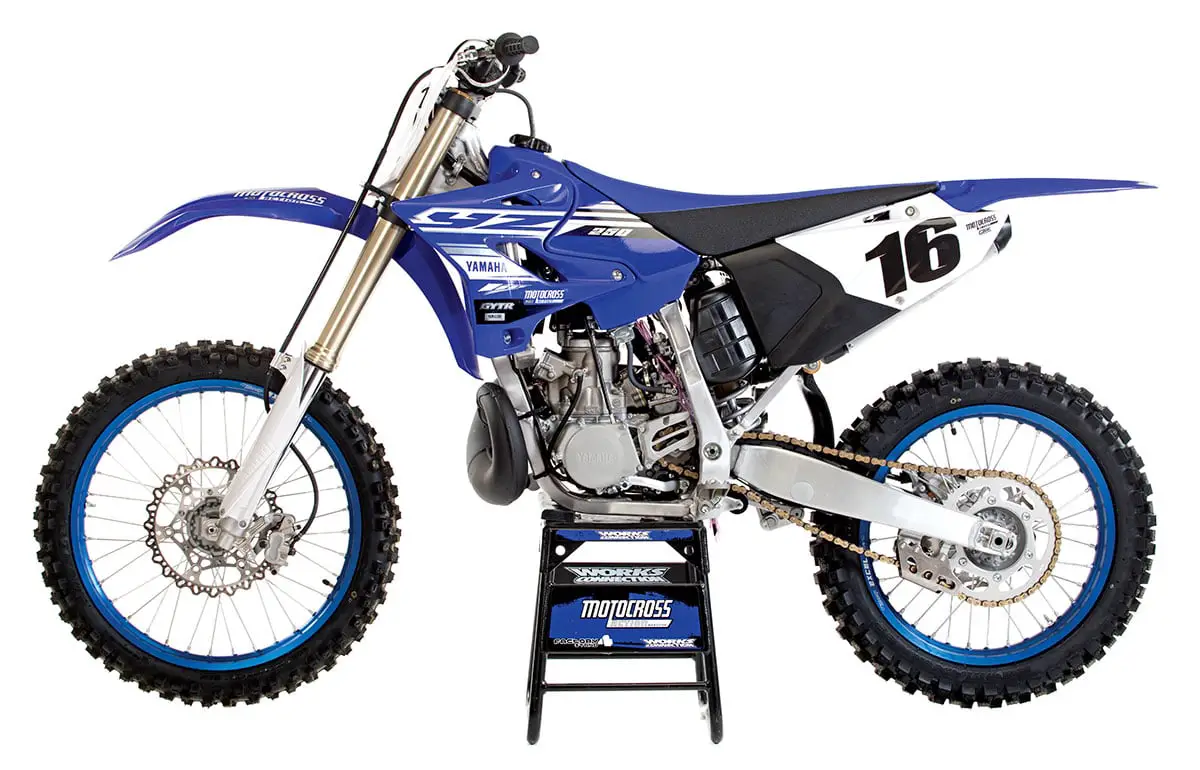 Name another bike built in 2006 that is still a viable race bike. The only correct answer is the 2006 Yamaha YZ125.
Name another bike built in 2006 that is still a viable race bike. The only correct answer is the 2006 Yamaha YZ125.
Q: WHAT DID WE HATE?
A: The hate list:
(1) Chassis. The YZ250’s chassis has always been a middle-of-the-road handler—and still is. It understeers and wiggles under power. But, if Yamaha can fix the 2019 YZ450F with little more than beefier fork lugs, imagine what the Yamaha R&D department could do for the YZ250.
(2) Engine. Love the powerband, but its Austrian competition will leave it in the dust off the start, up hills or in sand. Yes, we know that we can buy more YZ250 horsepower on the aftermarket, but that quickly erases the $800 price gap between the Yamaha and the KTM.
(3) Front tire. Dunlop’s MX52 front tire makes the YZ250 front end feel worse than it actually is. Invest in a better front tire to get the full potential out of the YZ250’s aluminum frame. We don’t mind the MX52 rear tire on hard dirt.
(4) Gear ratios. The upshift from second to third needs help. Luckily, once in third gear, no matter how far you rev the engine, it will never fall on its face. In a perfect world, we would like to see Yamaha move third gear closer to second (as Yamaha did on the YZ250X offroad version), but until Yamaha builds a new motocross gear box, we will just add a tooth to the rear sprocket.
(5) Clutch. We always order stiffer clutch springs for our Yamaha YZ250s, but we don’t always use them—or rather we don’t always use all of them. We prefer to mix and match a set of stock and aftermarket clutch springs to fine-tune the feel.
Q: WHAT DID WE LIKE?
A: The like list:
(1) Powerband. We think that more midrange horsepower would be helpful, but then so would more power everywhere. We love the YZ250’s power curve but need more oomph in the low to middle segment of the powerband.
(2) Suspension. The Kayaba SSS fork and shock are raceable right off the showroom floor, even though they are 13 years old.
(3) Maintenance. It doesn’t take a mechanical genius to keep a YZ250 running. Changing a top end is cheap and easy compared to a four-stroke. It is made all the more affordable by the fact that you can do it yourself.
(4) Bulletproof. The YZ250 is like the Energizer Bunny. It just keeps going and going.
Q: WHAT DO WE REALLY THINK?
A: The 2006-2019 Yamaha YZ250 is a remedy for the four-stroke doldrums. You know the symptoms. You can’t get the droning of four-strokes out of your head. You crave kick-in-the-pants acceleration. You want a bike that is almost 20 pounds lighter. You are tired of having to follow a conga line of four-strokes all glued to the same line. You would like to feel the joy of being able to work on your own bike. You want a bike that can have the top end rebuilt for $175, not $1500. Our prescription? Pop one Yamaha YZ250 under your fanny and kiss the doldrums goodbye.
MXA’S 2019 YAMAHA YZ250 SETUP SPECS
This is how we set up our 2019 Yamaha YZ250 for racing. We offer it as a guide to help you find your own sweet spot.
KAYABA SSS FORK SETTINGS
Yamaha did not give the 2019 YZ125 or 2019 YZ250 the most up-to-date version of its Kayaba SSS forks. They still come with the version with the smaller cartridge rod. No sweat. These year-old forks are perfect on the YZ250’s chassis. For hardcore racing, we ran this setup on the 2019 Yamaha YZ250 (stock clickers are in parentheses):
Spring rate: 0.43 kg/mm
Compression: 13 clicks out
Rebound: 14 clicks out
Fork-leg height: 10mm up (5mm up)
Notes: These are awesome forks, made all the more terrific by the light feel and snappy input of the two-stroke engine. Obviously, if you are fast or fat, you might want to go stiffer on the fork springs. Typically, however, fast riders can dial in more compression (and use the crossover effect of rebound damping to get the stock fork springs to work).
KAYABA SSS SHOCK SETTINGS
For hardcore racing, we ran this setup on the 2019 Yamaha YZ250 (stock clickers are in parentheses):
Spring rate: 4.7 kg/mm
Race sag: 105mm
Hi-compression: 1-3/4 turns out (1-1/2 turns out)
Lo-compression: 8 clicks out (13 clicks out)
Rebound: 8 clicks out (12 clicks out)
Notes: The YZ250 shock comes with a jumbo-sized 18mm shock shaft, Kashima-coated internals and SSS damping. AMA National-speed riders and heavyweight contenders will need to move up to a 5.0 kg/mm spring.
YAMAHA YZ250 JETTING
Here are MXA’s recommended jetting specs (when changed, stock specs are in parentheses):
Main: 178
Pilot: 50
Needle: N3EW
Clip: 2nd from top
Air screw: 1 turn
Notes: The 2019 YZ250 jetting is on the edge, albeit the good side of the edge. If you hop-up the YZ250 or add an aftermarket exhaust pipe, you will need to go to a bigger 180 main or add VP C-12 fuel. Other than that, the YZ250 jetting is basic, simple and effective. The air screw is very sensitive from 1/2 turn to 1 turn out.


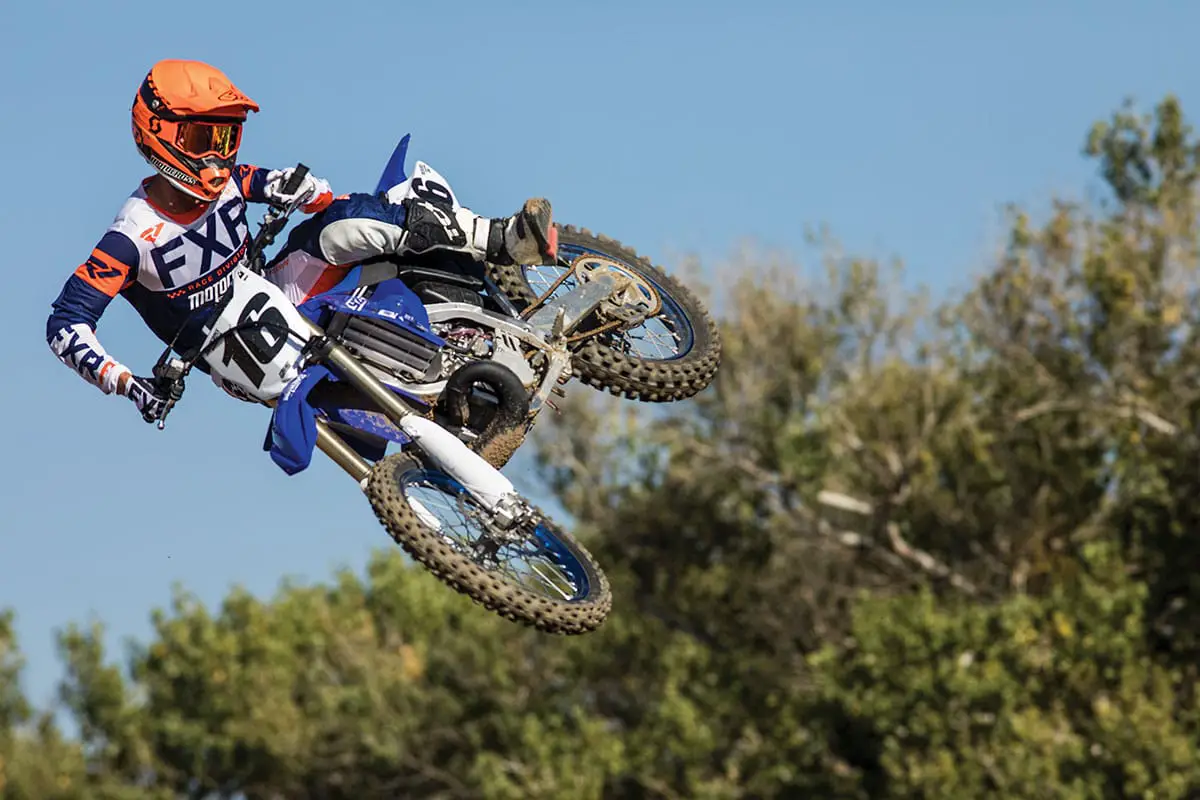

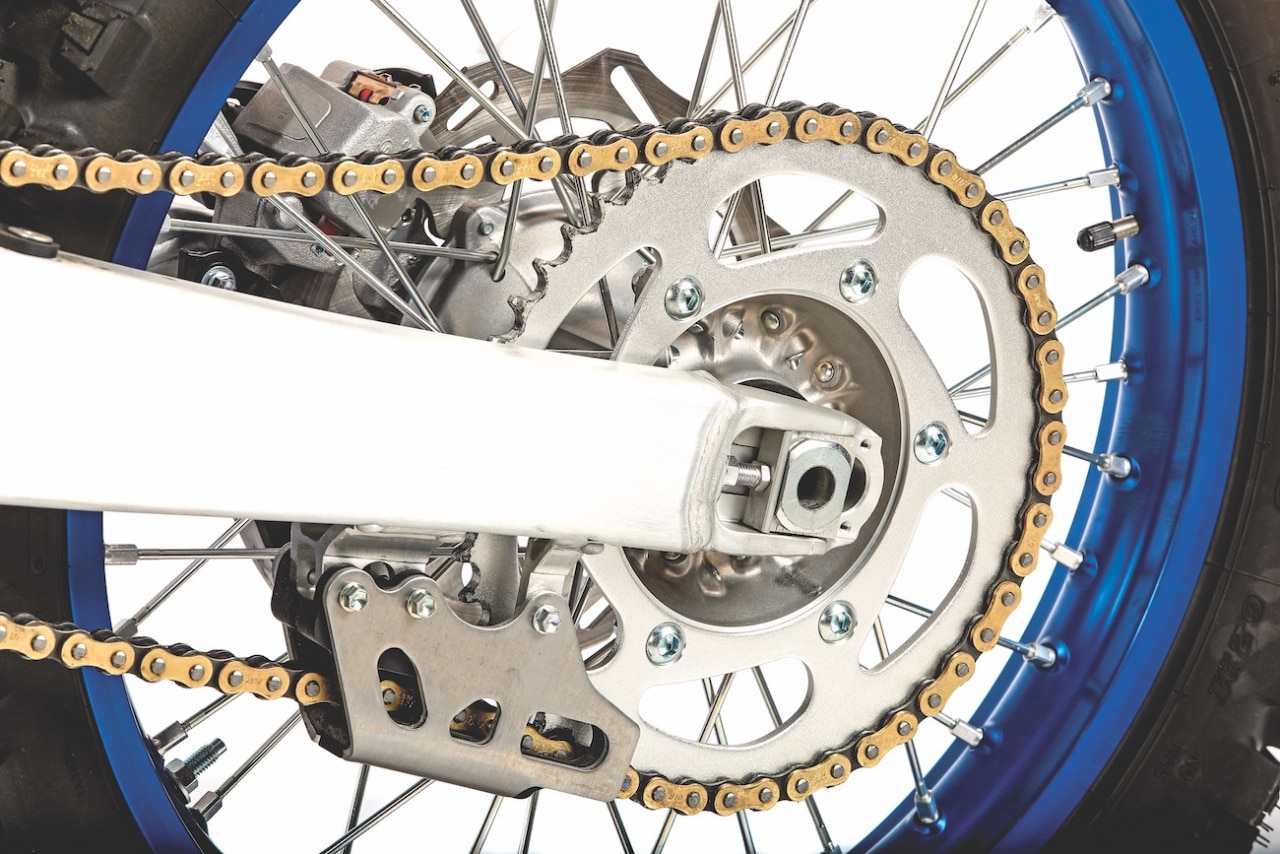
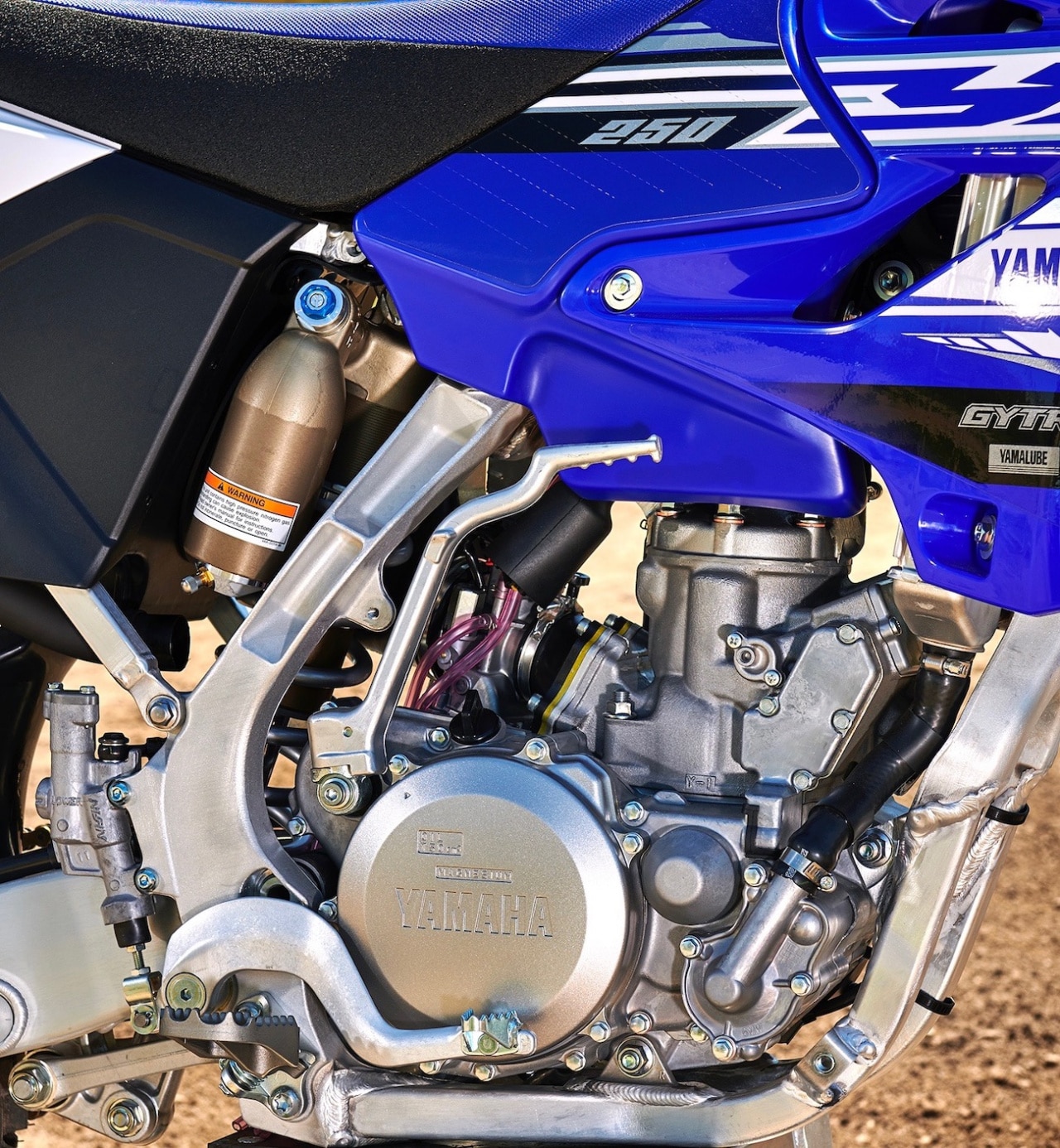

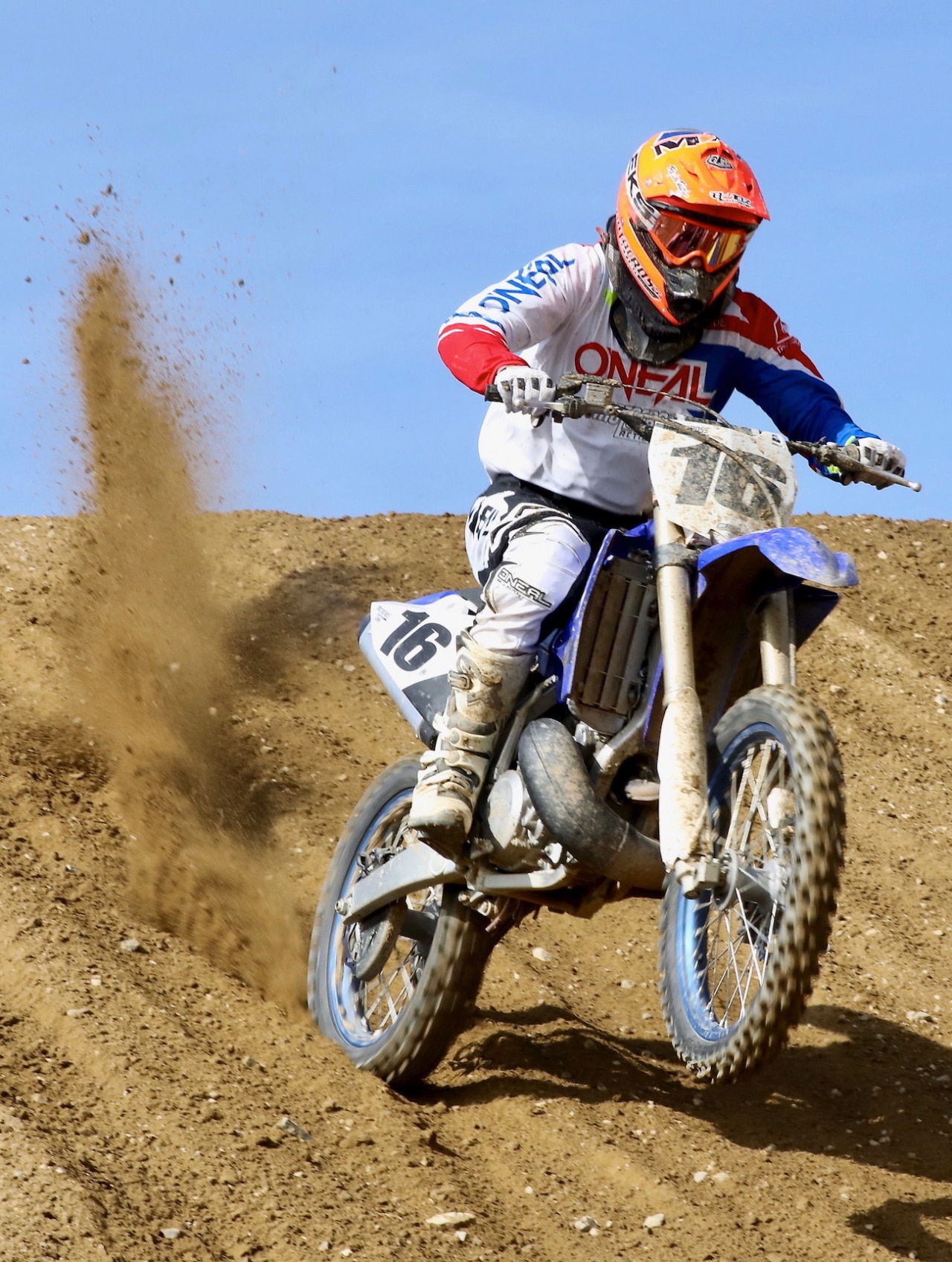
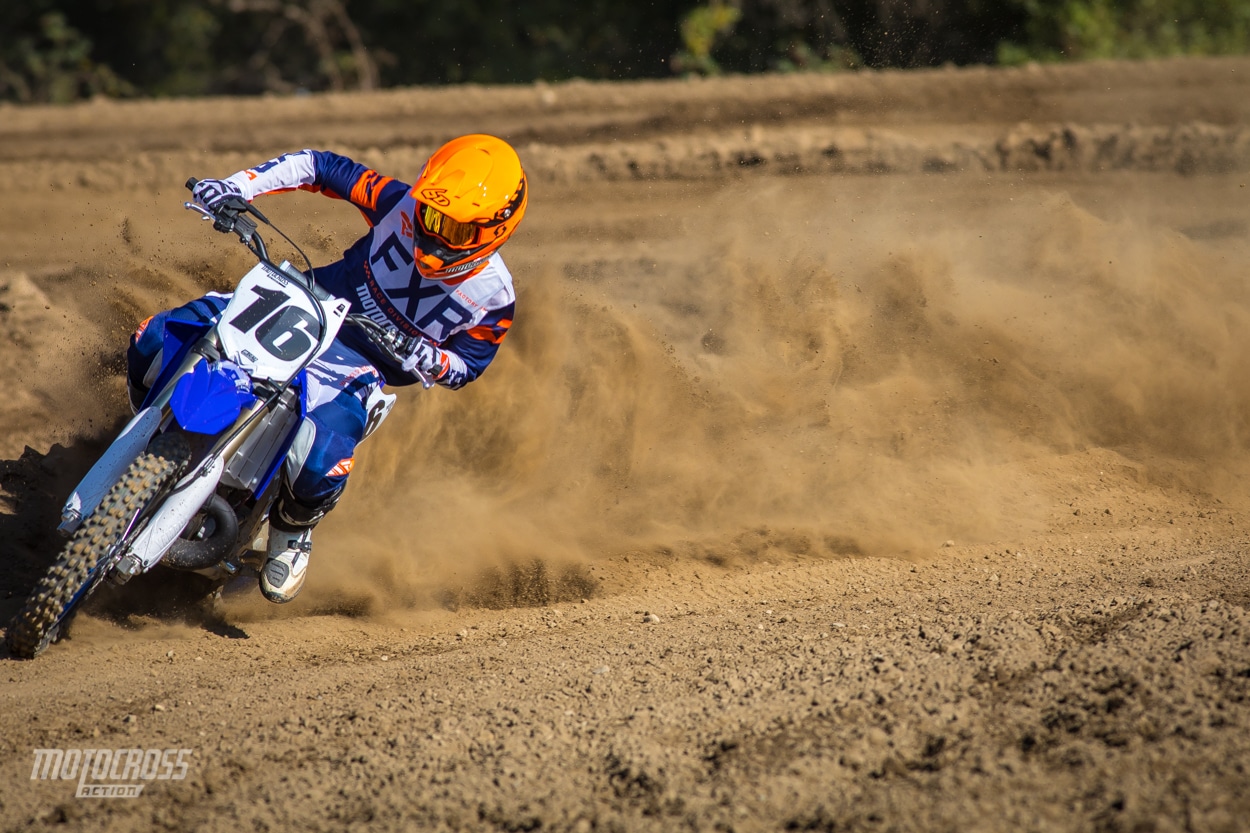
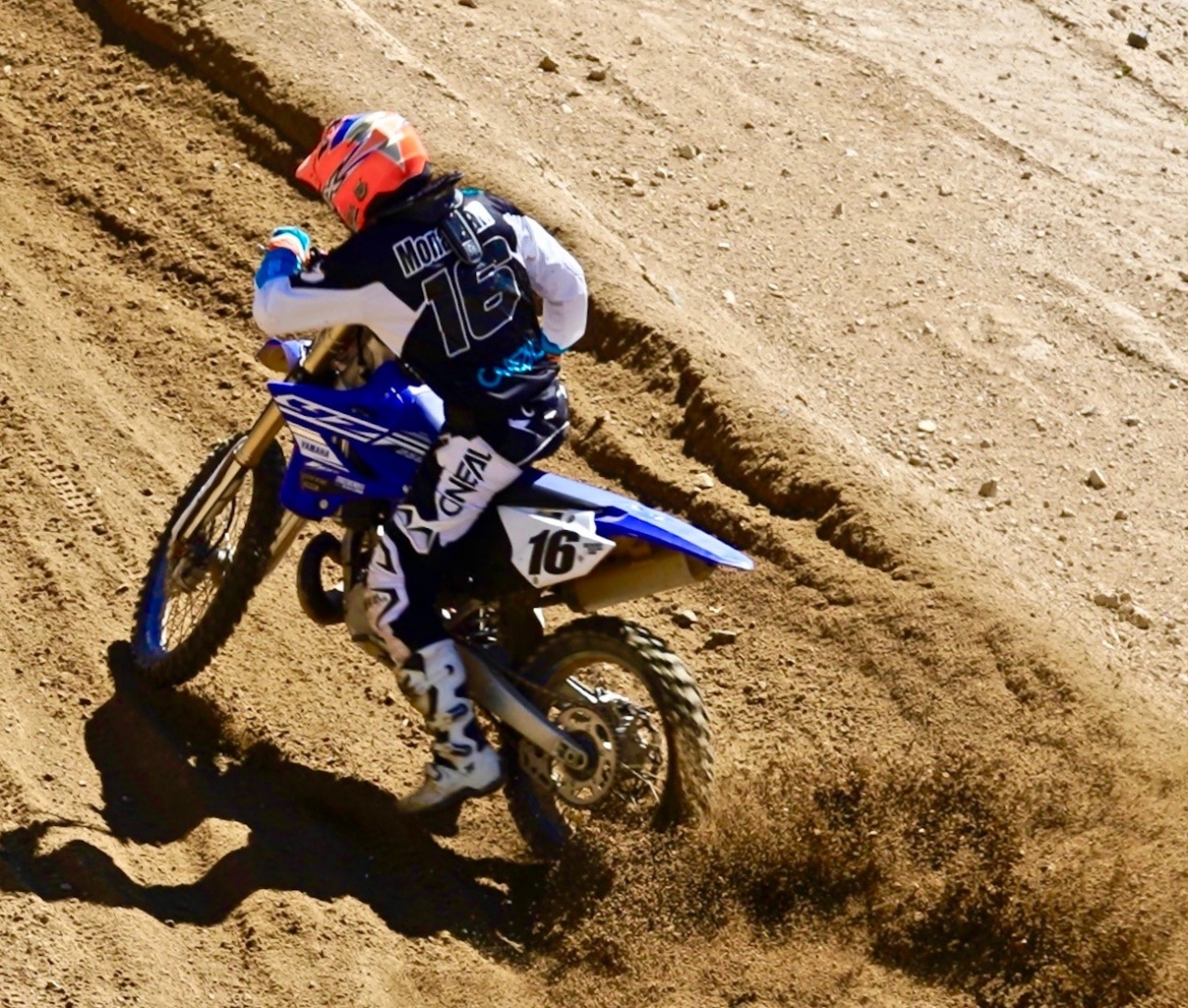




Comments are closed.